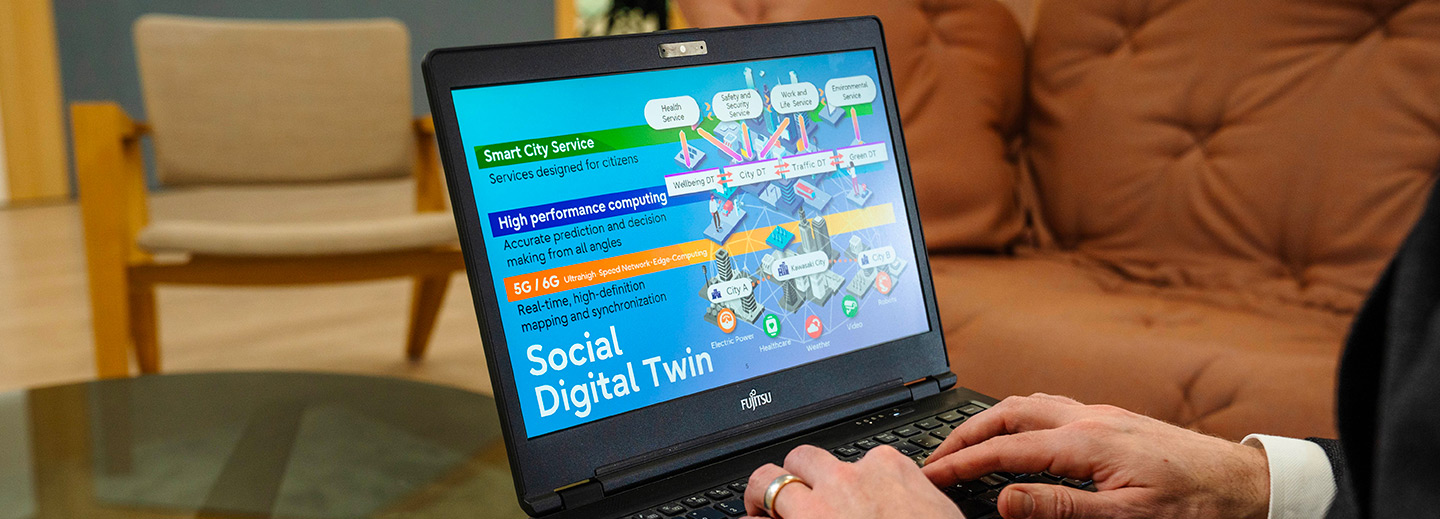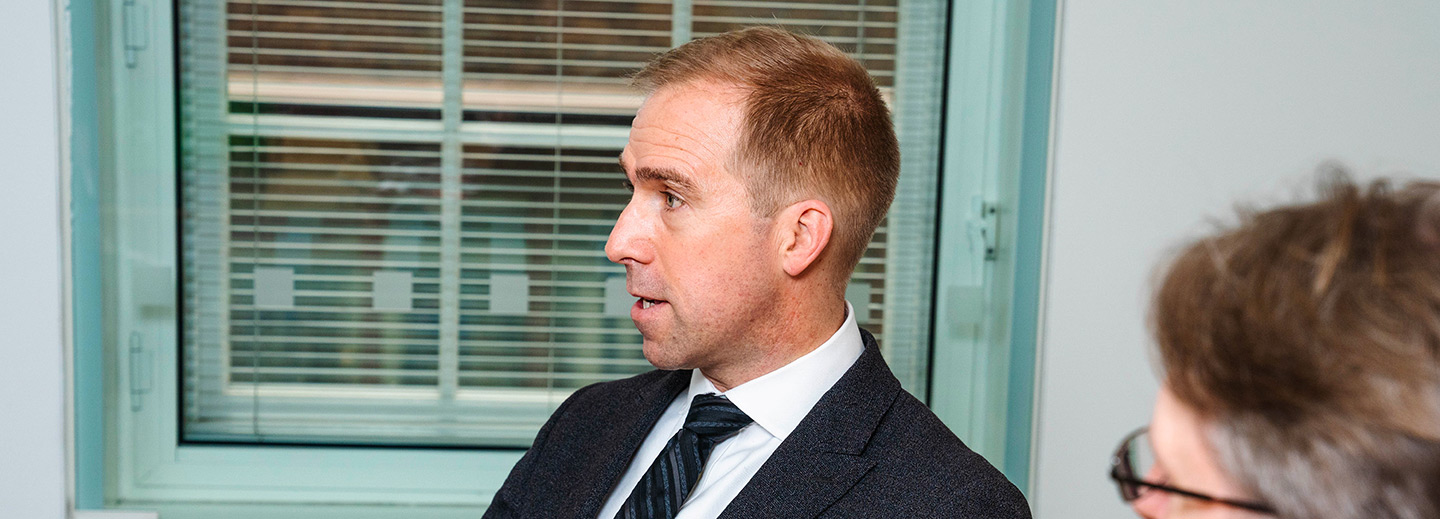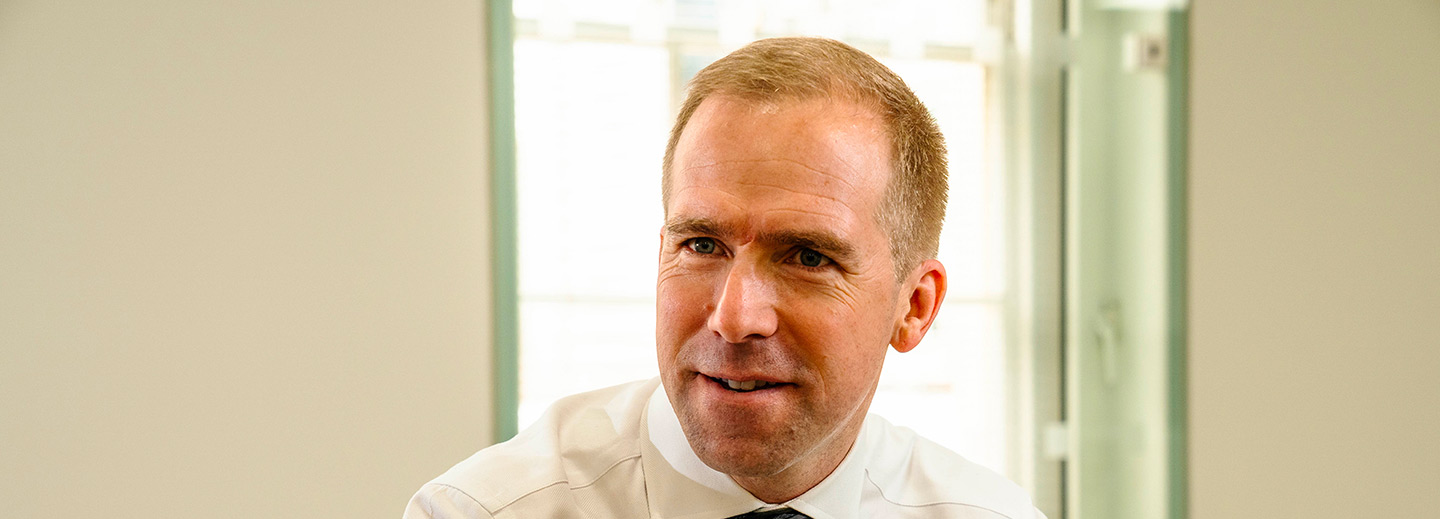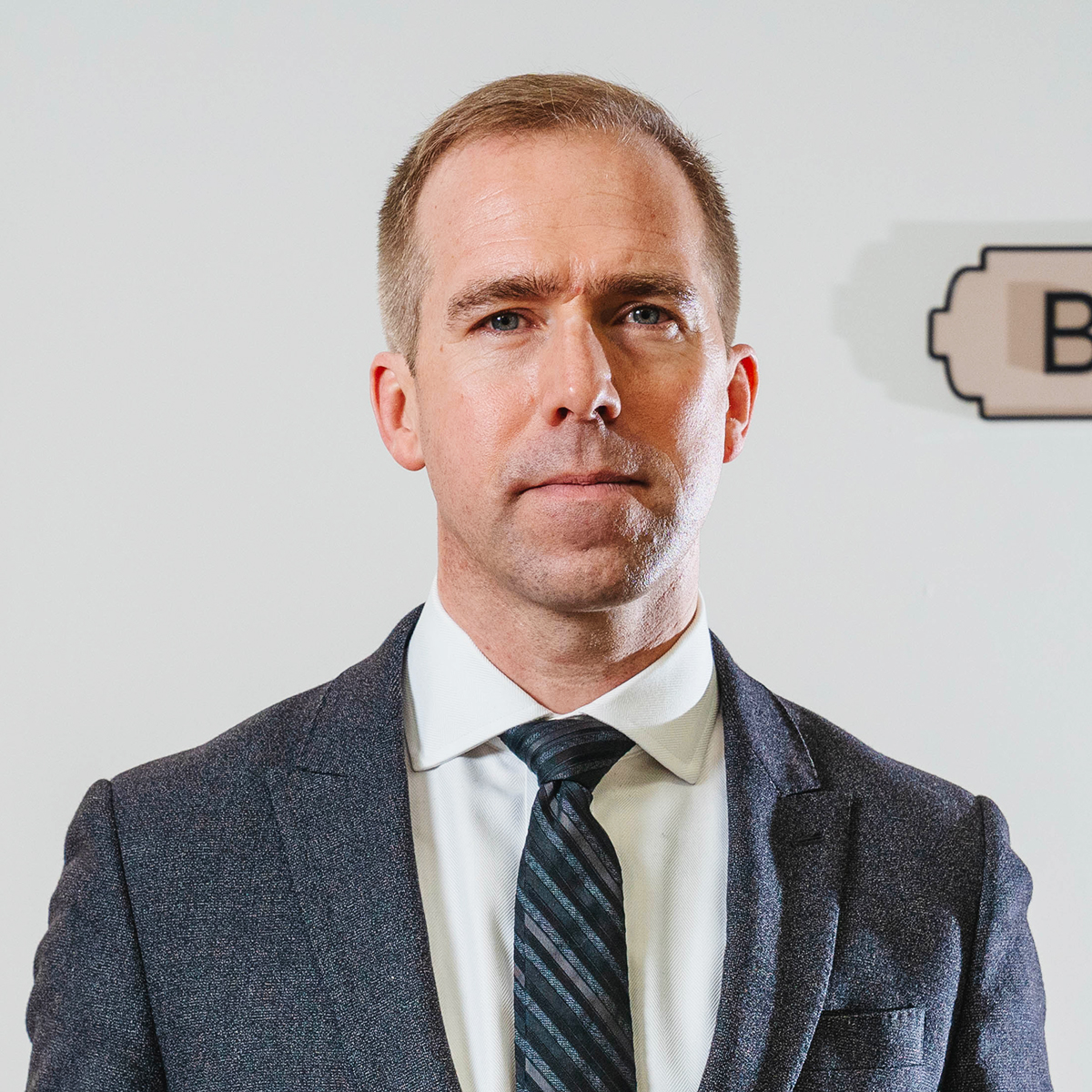How a sustainable and resilient society built with revolutionary digital twin technology will change the world
FUJITSU / April 18, 2022
Imagine a world where robust digital simulations, powered by lightning-fast processing power, can accurately predict real-world outcomes. Virtually simulated natural disasters, based on models crafted with the utmost precision, could predict and explore the aftermath of real-world equivalents, yielding data that holds the potential to save countless human lives.
This is just one example of the limitless potential of digital twin technology. Regarded as the most revolutionary development in how we interact with information since the birth of the internet, digital twin technology is the missing link between the seamless merger of the digital and physical worlds.
In this interview, Keith Dear, Director of Artificial Intelligence Innovation at Fujitsu Defence and Security and a Global Fujitsu Distinguished Engineer, explains how Japan’s Society 5.0 concept and the UK National Digital Twin programme foster a prosperous, sustainable society that will revolutionize the relationship between humans and technology.
Contents
Revolutionary technology at the intersection of the digital and physical worlds
Can you explain Japan’s Society 5.0 concept? What kind of society is this initiative aiming to create and what social benefits will it produce?
Keith Dear (Keith): Society 5.0 is part of Japan’s 6th Science, Technology, and Innovation Basic Plan, and it describes the complete fusion of the virtual and physical worlds—a new world where augmented and virtual reality begin to blur the boundaries between what's real and what's not. It’s a world that will revolutionize how we relate to information and involves everything that humans interact with. It’s a world where you can begin to optimize a lot of deeply inefficient processes and find new ways to do everything in a similar way to how the internet revolutionized society.
In parallel, the United Kingdom has a National Digital Twin programme; can you explain more about its goals and societal benefits?
Keith: Digital twins connect the virtual world with our physical world. If I change something in the virtual world, a real-world equivalent also changes. I first encountered the UK National Digital Twin programme when I was working in 10 Downing Street [the Prime Minister’s Office]. I was an expert advisor to the Prime Minister on the Integrated Review [of Security, Defence, Development and Foreign Policy].
The UK National Digital Twin programme started as part of a built environment information modeling effort. The government has sponsored research at Cambridge University with the goal of creating standards and protocols that would enable digital twins to connect to each other seamlessly. For example, if we try and connect two twins today, we’ll find that we need significant work to do so, much like connecting cell phones with different architectures and protocols. Internationally, without standardization we’ll find that Japan has a slightly different system than the UK and so forth. It’ll be analogous to trying to connect electrical appliances across different countries – we'll need adaptors to do so, adding cost and complexity. So, the National Digital Twin programme aims to build those standards and protocols for the UK and hopes to export them abroad. To our knowledge, it's the world's leading program, and some of its principles have already been adopted in Australia and New Zealand.
Because the National Digital Twin programme and Fujitsu consider security as a central component in creating connected digital twins standards and protocols, societal benefits of the programme include protecting individuals’ data security and the security of critical national infrastructure in a world where virtual and physical spaces are seamless. Presently, it's possible to argue that there are three principal models for how we interact with information. There’s the United States model that's been critiqued as surveillance capitalism, which sees humans as a product to be exploited. There’s a model pursued by authoritarian countries, described as digital authoritarianism, which sees us as threats to be managed. What we need is a digital democratic model—one that illustrates the huge benefits of being able to have digital twins of you and me but protects us from exploitation. That’s the model we’re building.

Ethically leveraging Fujitsu’s technology to create a resilient society
Why is Fujitsu involved in Society 5.0 and the UK National Digital Twin programme, and what role does Fujitsu play in these initiatives?
Keith: If you're talking about digital democracy, you're looking at the most profound level of trust in society. We also have something called the Social Digital Twin program at Fujitsu. About a year ago, colleagues from Fujitsu Research reached out to me about my prior work on the UK National Digital Twin programme. I described what it was, and they were interested in it because it applies to their focus area.
Fujitsu's model is changing, and we do a lot more of our exploration, invention, and research overseas—not just in Japan. Fujitsu Research wanted to test the Social Digital Twin program in the UK and build a relationship with the UK National Digital Twin programme. Now we are the lead technical partner for the National Digital Twin programme with the Department for Business, Energy & Industrial Strategy.
How does Fujitsu’s technology help these initiatives contribute to society?
Keith: Our heritage at Fujitsu, particularly in the UK, is being an integrator and a networking services provider. We take best-in-class technologies, and we assure our customers be it government or private sector that we are agnostic as to whose solutions we integrate. We simply find the best solution. To some extent, this is what being a trusted partner means. However, we also have unique technology. We leverage Fugaku [the fastest supercomputer in the world], and cloud-based access to high-performance computing to create very high-definition simulations. For example, that’s the kind of technology we may make available for flood modeling in a digital twin simulation. You can model cascading causal consequences when flood waters rise in the virtual world to predict and explore what happens in the real one. Although, we have a whole raft of unique technologies, we only recommend them to the government when they are, in the context of the specific solution required, genuinely world-leading.
What results have you achieved so far and what results do you anticipate in the future?
Keith: So far, we have worked with the Department for Business, Energy & Industrial Strategy to help them identify their pain points in the existing program and to make suggestions for how to overcome them. It’s a day-to-day working relationship based on co-creating solutions. I think we have helped to accelerate the Social Digital Twin program to show genuine real-world applications outside of Japan. I’m getting slightly in front of the company here, but I’m going to say it anyway: I hope that we’ll be showing what Society 5.0 looks like at the Expo 2025 in Osaka, Japan.

Data for the public good
What challenges have you faced while working on these initiatives, and how did you overcome those challenges?
Keith: We can break that down into three areas. First, there’s the technological area. It's easy to talk about the complete fusion of the virtual and physical worlds or simulation on a massive scale. The reality of actually doing it, however, presents profound challenges. For example, you have to deal with aggregated model error: the bigger your model is, the more error that you have in that model. It's easy to say that we're going to protect individuals’ data whilst also enabling it to be commercially beneficial and socially useful for the public good. In reality, that's a difficult problem. So, we're looking at blockchain solutions, quantum security, and a whole raft of different technology we might apply, as well as how to manage the conceptual, philosophical, and social issues arising.
The second challenge is an internal one. Fujitsu is transforming, and that's exciting. But change is hard. We're trying to work across a global company, which is both a strength and a weakness. We're trying to figure out how we utilize research that we’re funding at MIT & CMU in the United States, research from Japan, and research from within Fujitsu European regions, and of course from within the UK. We're transforming just as our customers are, facing and overcoming many of the same challenges common to all large organisations.
Finally, there are external challenges. To be a trusted partner, we have to carefully tread a fine line. We can’t get so close to the customer that our relationship might be perceived as unfair. There are also external communication challenges—we’re just in the foothills of that. We need to make sure that we explain precisely what we're doing in a way that reassures citizens that our work is in their best interest. It’s all about data for the public good. Everything we do has to be for the public good.
In summary, the three different challenges we face are technological, internal, and external challenges. Each one is demanding in its own way. However, these challenges are not without their moments of enjoyment. Trying to overcome profound challenges is part of the journey.

Striving to help societies operationalize emerging technologies
How does your personal and professional background relate to your work on these initiatives?
Keith: Considering my background in defense and national security, there's a natural segue from thinking about the profound problems that the international order faces to thinking about digital democracy. When I was involved with the Integrated Review, we talked about the key metrics of international competitiveness for the 21st Century being a nation’s ability to commercialize, operationalize, and manage emerging technologies. At Fujitsu, we’re helping the UK and Japan, two of the world's most important democracies, succeed in that goal.
On a personal level, I have a PhD (DPhil) from the University of Oxford in experimental psychology, so I approach technology from an unusual angle. My thesis was on the psychology of surveillance: what does it mean to live in a world where we're watched more closely than ever before? In what kind of world can we thrive as human beings? That world needs an awful lot of protections. That’s how my academic background fits into what we’re doing.
What aspect of your work are you most excited about?
Keith: I'm earning an executive MBA at Cambridge now, and I'm really excited about how we translate that and the rest of my academic background into a business benefit. I feel like I'm learning something new every day. For me, it’s all about learning with smart people from around the world. If I'm honest, my excitement isn’t just about technology. I’m excited about working with really smart people who help me build new skills related to developing technology faster and more effectively.
How does it feel to work on projects that have the potential to significantly impact society?
No matter how exciting it might be, in a way, my work feels like every job. It has all those human frustrations. Sometimes you feel overwhelmed. You have meetings. There’s just a human reality to it.
At the same time, there's that little bit of extra motivation to get up and engage with everything. It’s all about trying to keep a balance between being excited and evangelistic about what this could achieve and the prosaic day-to-day activities. You need to get people to speak to each other and match the right technologies to the right solutions. So, my work is profoundly exciting but also has all the normal human elements of getting big organizations to work on profound problems.

Envisioning a future shaped by digital twin technology
What will the world look like when Society 5.0 and the National Digital Twin programme are fully integrated into society?
Keith: Let me start by telling you what the world won’t look like. It’s not going to look like what we see in Minority Report or Ready Player One. We don't want to create a dystopia through the fusion of the virtual and physical worlds.
It’s hard to put boundaries on something that is as profound and revolutionary as the internet for how we interact with information. We’re talking about walking through your city with an augmented virtual layer that is personalized to you. We’re talking about a world in which we can flag indicators and warnings, map cascading causal consequences, run faster-than-real-time simulations of everything, and draw probabilistic forecasts to predict and prepare for the future more accurately than ever before. This is a world in which you can be present anywhere instantly—not just telepresence but, on occasions, telexistence. For instance, we might be having a meeting but, instead of talking through a camera, we’ll be virtually sitting in the same room, interacting with real world objects via their digital twin and/or robotic interfaces in the real world. We're talking about the enterprise architecture of the metaverse.

Is there anything else that you would like the world to know about these initiatives?
Keith: We’re building these initiatives use case by use case, co-creating with our partners. Going forward, I can see us working with insurance companies and financial services companies – many of those conversations are quite developed, and build out from established relationships. Digital twins will provide them with real benefit. For example, just as it’s important for governments to use digital twin technology for flood modeling, insurance companies can benefit from this technology as well. They can better tailor their premiums. Financial services companies can better understand how much risk is involved in their loans by requiring clients to supply a connected digital twin ecosystem of their operations to stress-test their CO2 emissions in various scenarios. In doing so, they would better understand the level of compliance risk they were carrying when extending climate-influencing finance. This all works through co-creation and building out a portfolio, one project at a time, across all sectors, and where appropriate, connecting across sectors
Before you know it, we’ll move from the Internet of Everything [IoT] to the digital twin of everything: Society 5.0 and the fusion of the virtual and physical worlds. I hope people will contact us and approach us with their problems. We’ll try to solve them together.

Within Fujitsu he has pioneered his work with the National Digital Twin programme in the UK, to help build what he thinks will be the enterprise architecture of the metaverse. With colleagues, he is pioneering research into next-generation AI techniques with universities in the UK, the US, and globally as well as building out the co-creation environments to bring together users, problems, and data to co-create and rapidly diffuse new AI/ML, quantum-inspired (digital annealing), and supercomputing solutions.
Related information
Editor's Picks






